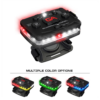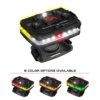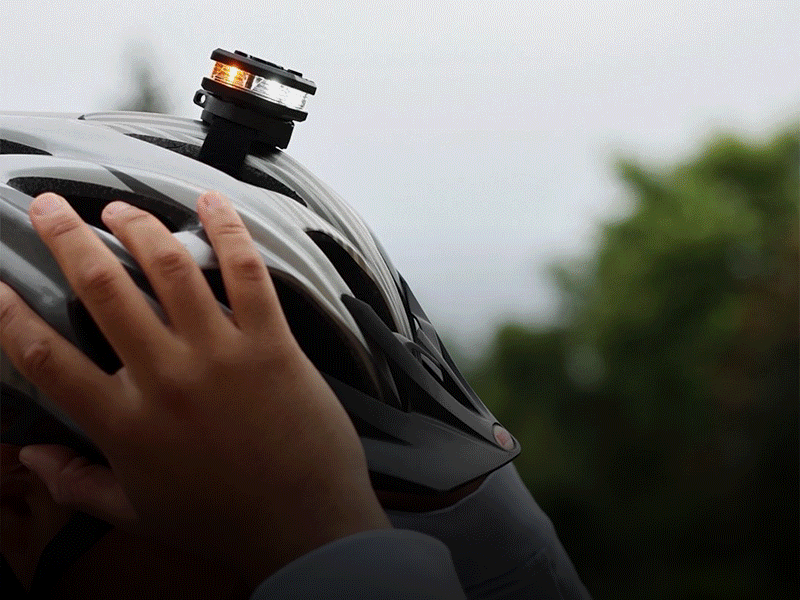How to Keep Your Tow-Truck Drivers Safe on Night Shifts

Night shifts are a reality for most towing professionals, but they also present some of the most dangerous working conditions in the industry. Poor lighting, high-speed traffic, and drowsy drivers create the perfect storm for accidents. From 2015 to 2021, no fewer than 123 roadside assistance providers died after being hit by a vehicle while performing their duties.1
The risks are especially high when responding to a car broken down at night on a busy highway or shoulder. Oncoming drivers may not see the recovery zone in time, and too many still ignore the Move Over laws applicable in all 50 states. But with the right tow-truck driver safety gear and training, you can reduce those risks and help your crew get the job done safely, every time.
Fleet-Wide Night Shift Safety Tips to Implement
As a tow-fleet manager, enforcing night shift safety precautions is an investment that pays off in every possible way. Having said that, let’s look at some useful tow-truck driver safety tips.
1. Enforce Fatigue Management Policies
Driver fatigue is one of the most common and preventable problems for tow operators. Implement rotating shifts to avoid overworking the same employees night after night. Also, establish mandatory breaks and limit the number of hours an operator can be on call overnight.
Encourage light, energy-sustaining meals before each shift, and discourage sugary or salty snacks that lead to crashes in alertness. Require 15-minute breaks every 2-3 hours and encourage drivers to walk or stretch rather than remain in the truck. Remind them that symptoms like yawning and lane drifting mean it’s time to pull over and rest. It’s better to delay a call than risk serious injury.
2. Standardize Visibility Requirements
If your team is responding to a broken-down car at night, they need to be seen, plain and simple. Require all operators to wear ANSI-rated reflective vests or jackets. Outfit each truck with extra lighting and tow vehicle protection like reflective decals, perimeter strobes, and emergency flashers.
Just as important: hands-free personal lighting. Our Guardian Angel lights, for example, offer 360-degree visibility and can be worn on shoulders, helmets, or attached to uniforms. They’re bright enough to alert drivers from over five miles away.
Safety studies show that when paired with a reflective vest, they make the wearer up to 89% more visible than a vest alone, creating a significantly safer work zone around every tow-truck at night.
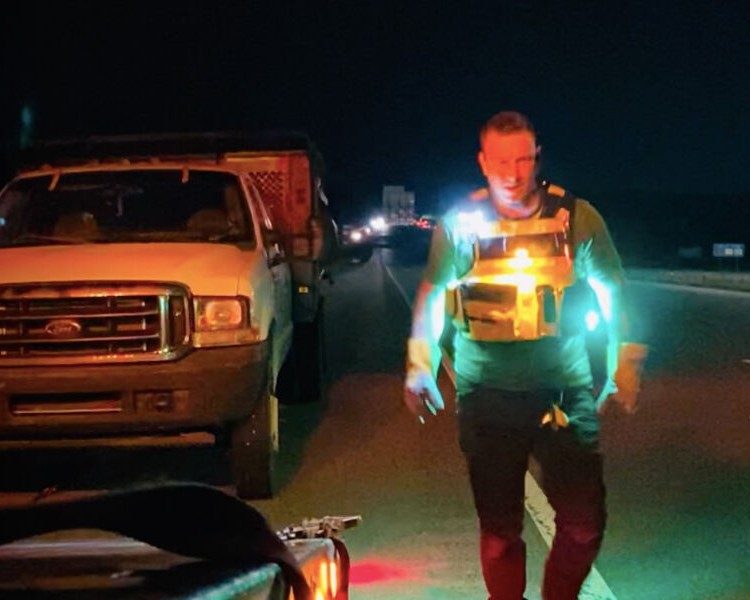
3. Train for Safe Roadside Recovery Procedures
Every recovery job comes with unique risks, especially when towing at night. That’s why training matters.
Vehicle Positioning and Setup
- Teach road-service providers to angle the truck slightly away from traffic, creating a visual cue and buffer.
- Emphasize using hazard lights and reflective cones to define the work zone.
- Practice setups on both wide shoulders and narrow breakdown lanes.
Exiting and Re-Entering the Cab
- Always exit on the passenger (non-traffic) side when possible.
- Reinforce scanning for oncoming traffic before stepping out or walking around a broken-down car at night.
- Avoid standing between vehicles when possible.
Winching and Hookup Procedures
- Conduct training in daylight and at night, using real equipment.
- Use your work light (or Guardian Angel white mode) to illuminate the hookup area without needing handheld flashlights.
- Train operators to secure winch cables and safety chains efficiently but carefully. Speed should never come at the cost of awareness.
Emergency Situations
- Simulate scenarios such as:
- Oncoming traffic failing to move over
- Disruptive motorists
- Secondary accidents during a recovery
- Teach operators when to stop a job and move to safety.
By building these habits into every training session, tow-truck providers create muscle memory that can save lives when seconds count.
4. Improve Communication Protocols
Strong communication systems are critical for roadside assistance providers. Each of your trucks should be equipped with two-way radios or push-to-talk devices that work independently of cell signals. Dispatch should have GPS tracking with automated alerts if a driver is idle or deviates from a planned route for too long.
Build in scheduled check-ins, particularly during long or hazardous calls. Also, ensure every operator knows exactly who to contact and how to escalate a call in case of an accident or equipment failure. Visibility helps prevent accidents, but communication keeps your team supported when things go awry.
5. Equip Trucks and Staff With the Right Safety Gear
A fully stocked truck is a safer truck. Here’s what every operator should have on hand during night shifts:
- Roadside cones or collapsible triangles
- Reflective flags or flares
- High-visibility vests or jackets
- First-aid kit
- Rechargeable headlamp
- Fire extinguisher
- Durable, waterproof lights that attach to clothing or metal surfaces
Guardian Angel lights are notable not only for visibility, but for flexibility. Operators can wear one on their shoulder and place a second on the back of the vehicle being recovered.
With the Magnetic Cone Mount Attachment, the light can be elevated on a standard traffic cone. This dramatically extends its reach and creates a glowing perimeter that alerts drivers well before they approach the hazard zone.
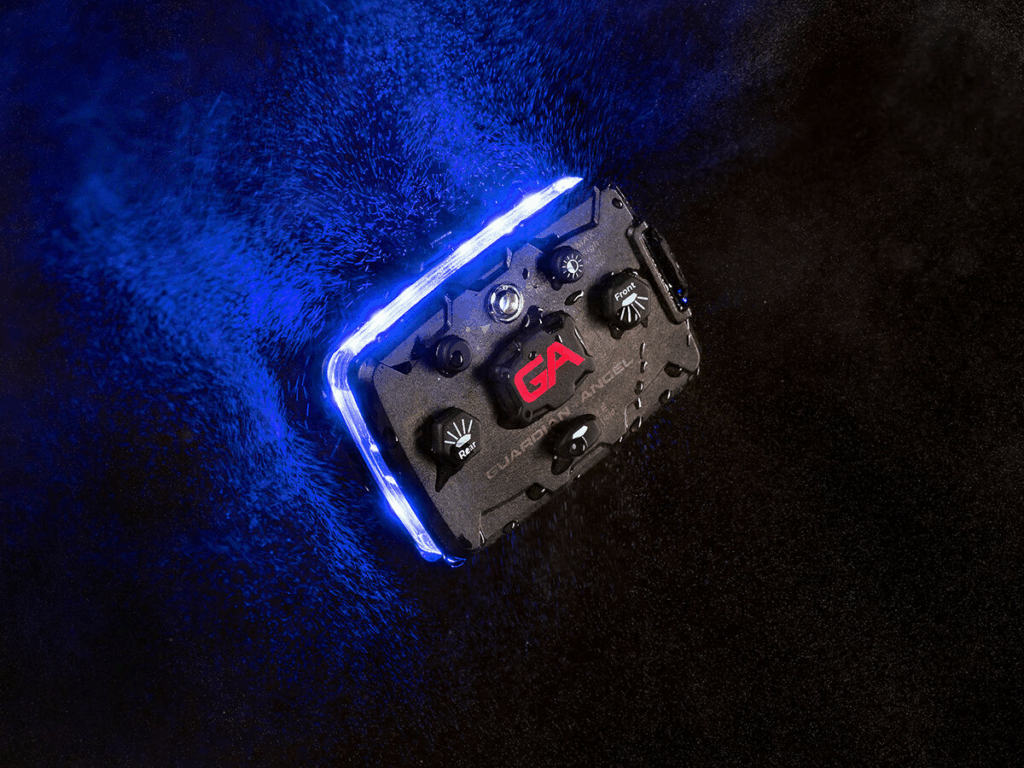
Why Guardian Angel Lights Make a Difference
Guardian Angel lights are built for professionals working roadside, offering a powerful combination of brightness, durability, and hands-free functionality. When every second counts and traffic doesn’t slow down, these devices give tow-truck crews the visibility they need to stay safe and stay seen.
Let’s look at the reasons why these lights have become an important part of tow-truck driver safety gear:
- 360-degree visibility: Light modes include flashing, white work lights, and SOS.
- Extreme durability: Impact-resistant, IP68 waterproof, and built for tough field conditions.
- Battery life you can count on: Designed to last through entire shifts with quick recharge capability.
- Hands-free operation: Clip to a vest, helmet, or belt. No need to juggle a flashlight while winching.
- Easy mounting: Stick to the truck body, the back of a vehicle, or the Magnetic Cone Mount Attachment to expand visibility across the whole scene.
Instead of relying on static vehicle lights or handheld flashlights, Guardian Angel lights can enable your crew to work faster and safer.
Want to hear directly from someone who’s used our lights in the field? Watch this testimonial from a tow operator who credits Guardian Angel lights with keeping him safe during night recoveries.
Make Safety Part of the Job, Not an Afterthought
A trained, visible, well-equipped crew is a protected crew. And when your team knows you’ve got their backs, morale and retention go up too.
The road is unpredictable, but your safety practices shouldn’t be. Guardian Angel lights for tow-truck drivers deliver the high-quality solutions that road service teams need.
Sources:
- AAA Foundation for Traffic Safety. Roadside Assistance Providers Fatally Struck by Vehicles at the Roadside: Incidence and Characteristics – Jan 2024.
